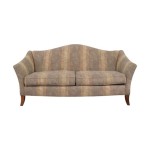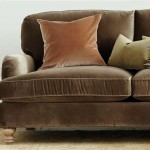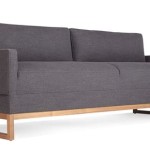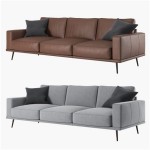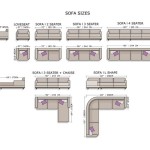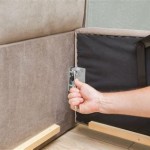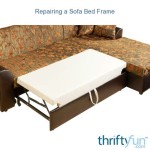Decoding the Leather Air Sofa: Meaning and Considerations
The term "Leather Air Sofa" can be initially perplexing as it doesn't point to a single, standardized product. It represents a conceptual blend of materials and construction techniques intended to offer specific comfort and aesthetic benefits. Understanding the meaning of "Leather Air Sofa" requires examining its individual components and how they interact.
The "Leather" aspect refers to the upholstery material. This can range from genuine leather sourced from animal hides to synthetic leather alternatives, often referred to as faux leather or leatherette. Genuine leather offers durability, a luxurious feel, and a distinctive aging process that develops a unique patina over time. Synthetic leathers, conversely, are typically more affordable, easier to maintain, and can be manufactured in a wider array of colors and textures. The choice between genuine and synthetic leather depends on budget, lifestyle, and personal preferences regarding aesthetics and ethical considerations.
The "Air" element signifies a construction technique aimed at enhancing comfort and support. This often involves incorporating features such as air chambers, padded layers designed to promote airflow, or specifically engineered foam that provides increased breathability. The primary goal is to mitigate the heat retention often associated with leather upholstery, particularly in warmer climates. This "air" component can take various forms, impacting the overall comfort and feel of the sofa.
Combining these elements, a "Leather Air Sofa" broadly refers to seating that utilizes leather (genuine or synthetic) as its primary upholstery material, coupled with design and construction features that prioritize air circulation and breathability to enhance comfort. The precise implementation of the "air" component is where significant variations occur between different manufacturers and models.
Understanding the "Air" Component in Leather Sofas
The methods employed to introduce the "air" component into a leather sofa are diverse. They are designed to address the inherent characteristic of leather, which can trap heat and moisture against the body. These strategies aim to create a more comfortable and temperature-regulated seating experience.
One common approach involves incorporating internal air chambers or pockets within the sofa's construction. These chambers allow air to circulate, preventing the build-up of heat and promoting ventilation. The placement and design of these chambers are crucial for achieving optimal airflow without compromising structural integrity or aesthetic appeal. The efficacy of this method is highly dependent on the quality of the materials used and the precision of the manufacturing process.
Another strategy focuses on the use of breathable foam materials in the cushioning. These foams feature open-cell structures that facilitate airflow and allow moisture to evaporate more readily. These specialized foams are often denser and more resilient than standard foam, contributing to both comfort and durability. The type and density of the foam significantly affect the sofa's overall firmness and support.
Perforated leather is another method implemented to enhance air circulation. Small perforations are strategically placed on the surface of the leather, allowing air to pass through the material. While this can improve breathability, it can also potentially impact the leather's durability and aesthetic appearance. The size, density, and placement of these perforations are carefully considered to balance airflow with the leather's structural integrity.
Furthermore, some manufacturers utilize innovative layering techniques, combining different materials with varying degrees of breathability. For example, a layer of breathable fabric may be placed beneath the leather upholstery to facilitate airflow and wick away moisture. This layered approach can provide a more effective solution than relying solely on a single material or technique.
Distinguishing Between Genuine and Synthetic Leather in Air Sofas
When evaluating a "Leather Air Sofa," determining whether the upholstery is genuine leather or a synthetic alternative is crucial. Each material offers distinct advantages and disadvantages in terms of cost, durability, maintenance, and aesthetic appeal.
Genuine leather is derived from animal hides and possesses inherent qualities such as durability, elasticity, and a unique grain pattern. It is generally more expensive than synthetic alternatives. Genuine leather develops a natural patina over time, enhancing its character and aesthetic appeal. However, it requires regular maintenance, including cleaning and conditioning, to prevent drying, cracking, and staining. It is also more susceptible to damage from scratches and spills. The source and tanning process of the leather also impact the final product's quality and environmental impact.
Synthetic leathers, often made from polyurethane (PU) or polyvinyl chloride (PVC), are manufactured to mimic the look and feel of genuine leather. They are typically more affordable, easier to clean, and resistant to staining and fading. Synthetic leathers are also available in a wider range of colors and textures. However, they generally lack the durability and breathability of genuine leather. They may also have a less luxurious feel and do not develop the same natural patina over time. The manufacturing process of synthetic leathers can also have environmental implications, depending on the materials and processes used.
Distinguishing between genuine and synthetic leather can be challenging, particularly with advancements in synthetic leather technology. Several factors can aid in identification. Genuine leather often has a natural grain pattern with variations and imperfections, while synthetic leather tends to have a more uniform and consistent texture. Genuine leather typically has a distinctive smell, while synthetic leather may have a plastic or chemical odor. The edges of genuine leather are often rough and unfinished, while synthetic leather edges are typically smooth and sealed. Examining the back of the material can also be helpful, as genuine leather will have a fibrous backing, while synthetic leather will have a fabric or knit backing. Ultimately, consulting with a knowledgeable salesperson or referring to the manufacturer's specifications is the most reliable way to determine the material composition.
Factors to Consider When Purchasing a Leather Air Sofa
Purchasing a "Leather Air Sofa" involves considering several factors to ensure it meets individual needs and preferences. These factors include the type of leather, the effectiveness of the "air" component, the overall design and construction quality, and the specific intended use of the sofa.
The type of leather, whether genuine or synthetic, should be evaluated based on budget, lifestyle, and aesthetic preferences. Genuine leather offers durability and a luxurious feel but requires more maintenance. Synthetic leather is more affordable and easier to care for but may lack the same level of durability and aesthetic appeal. The specific type of leather (e.g., full-grain, top-grain, bonded) also influences its quality and performance.
The effectiveness of the "air" component is crucial for achieving optimal comfort. Evaluate the specific methods used to enhance airflow and breathability, such as air chambers, breathable foam, or perforated leather. Consider the climate and personal preferences regarding temperature regulation. Reading reviews and seeking expert advice can help assess the real-world performance of the "air" component.
The overall design and construction quality are essential for ensuring long-term durability and aesthetic appeal. Examine the frame construction, the quality of the stitching, the density of the cushioning, and the overall fit and finish. A well-constructed sofa will provide greater support, resist sagging, and maintain its appearance over time. The style of the sofa should also complement the existing decor and personal preferences.
The intended use of the sofa should also be considered. A sofa used primarily for lounging may require deeper cushions and a more relaxed posture, while a sofa used for more formal seating may benefit from a firmer support and a more upright position. Consider the size and layout of the room to determine the appropriate sofa dimensions and configuration.
Furthermore, warranty and return policies should be carefully reviewed before making a purchase. A comprehensive warranty can provide protection against defects in materials and workmanship. A flexible return policy allows for the sofa to be tested in the home environment and returned if it does not meet expectations.

Deciphering Comfort Air Leather Vs Genuine Sofas Which Is Right For You Direct Furniture Warehouse

The Definitive Guide To Choosing Leather Aire Sofas

The Definitive Guide To Choosing Leather Aire Sofas

4 Diffe Types Of Leather Sofas

What Is Leather Aire Furniturein Blog

Recliner Sofas Free Delivery Lovesofas

Inflatable Sofa Bestway 75054 Categories

4 Diffe Types Of Leather Sofas

The Deep Seated Meaning Of American Sofa Npr

The Distinctive Qualities Of Nappa Aire Leather A Touch Timeless Luxury Durian Blog

